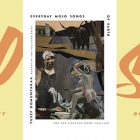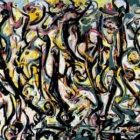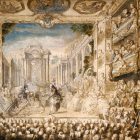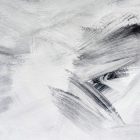Women Inventing Feminine Language

“Feel how wounded this line is,” Carole Maso writes in Aureole about an excerpt in Virginia Woolf’s To the Lighthouse, “how it limps with grief, how it is barely intelligible by the usual standards—as if ordinary structures could not possibly hold this level of emotion, this weight. It remains broken, filled with confusion and yearning.” Writing the “wounded line” has become a hallmark of women’s language. Notably, such language is difficult to separate from the body—whether because the woman writer’s woundedness is found in or on the body or because the wound presents otherwise, a mental wound that, often frustratingly, has no obvious physical counterpart. The body, then, becomes a way of anchoring the writer’s experience. Yet to talk about women’s language as wounded is problematic because for so long women’s wounds were either taboo or fetishized. In order to avoid this fetishizing, women find new means of expression by writing outside of existing structures.
In The Book of Beginnings and Endings, Jenny Boully, primarily writing about coming of age and love, radically warps both language and form as she unpacks the experience of being a woman. The book is composed alternately of a beginning, which often breaks off abruptly even mid-sentence, and endings, which begin in the middle of sentences at times and always without context. This form makes us question where, and what, the body of the text is; to derive wholeness; the fragmentation forces us to create the missing body. In this way, Boully invites readers into liminal spaces, introducing us to “the space of ajar” in her first beginning and leading us, in her first ending, to consider “[t]hat great space of in between, that unknowing of what then, of what next,” “[a]n infinite singularity, a space for heaving.” This description reveals that liminal spaces are not just for thinking—they’re spaces for the body to come to terms with what’s happening to it. The connection Boully offers between these two passages is a pattern maintained throughout the book. So what does Boully say and what does she leave unsaid?
In her examination of a girl’s adolescence, a topic which women have historically been forbidden from speaking about, Boully begins by saying, “There ought not to be erasers or cleaning solvents, those things which make it possible to no longer believe in permanence.” This loss of permanence leads her to discuss the bodily changes girls experience:
It isn’t so much that our bodies became misrepresentations of what we were, but rather that the meaning of everything had altered, had become suffused with the once hidden mortality, the once obscured fatal connotations—the whole world in conspiracy, the very violets whispering, the very conniving spiders weaving die.
Not only is Boully’s phrasing beautiful, but the images she turns to are surprising. In order to write about female adolescence, Boully must be creative with her imagery. She asks, “How can one forget the first black stain, the acquired fragileness that keeps us forever from becoming whole?” This question lingers in the liminal space between this beginning and the ending, also about the loss of childhood and which starts, “the fact that someone had been taking advantage,” that follows. These are different stories, yet Boully creates an undeniable thematic connection, drawing us to wonder what has gone on in the elided parts, imbued as we are with a sense that it’s been something catastrophic: the first black stain, taking advantage, a lack of wholeness, a shattered permanence.
While she does find language to express herself, Boully’s form suggests that words are not enough, that something must remain unspoken in order to convey the experience of women’s bodies; she shows that the pauses surrounding words are part of language. Maso underscores that this recreates women’s bodies. “I love the ability to create new logics,” Maso says, “a logic of passion, a logic of the body dramatized by where the line breaks, or the paragraph, a logic of passion created in the caesuras, in the gaps, where unexpected tensions can produce palpable sensation.” Like Boully, Maso notes that space, in addition to words, must be used to recreate women’s experiences so that the reader feels them both emotionally and bodily. In short, space is part of feminine language, too.
Yet creating liminal space within one’s language is not the only way women writers manage to recreate their bodies. Women also use visceral language to describe their bodies. Lucy Grealy’s Autobiography of a Face provides one of the most poignant examples of talking about one’s wounds. Grealy recreates her constant battle of dealing with the physical sensations as well as the psychological effects she experienced as a result of her childhood jaw cancer that left her face disfigured. “Sooner or later we all have to learn the words with which to name our own private losses,” Grealy writes. And yet, she also questions one’s ability to do so: “Language supplies us with ways to express ever subtler levels of meaning, but does that imply that language gives meaning, or robs us of it when we are at a loss to name things?” This question dominates Grealy’s text but also serves as a central question in examining the language choices women writers make. Perhaps this explains Boully’s ellipses of language or Woolf’s barely intelligible sentences.
What Grealy can best name, and what she does name in detail, are all the ways in which her body hurts. Other feelings, such as a shame, guilt, and inadequacy, frequently flood her, but the body becomes the pivot on which they all turn, the one thing we can visualize. “I was my face, I was ugliness,” she declares, “this singularity of meaning…though sometimes unbearable, also offered a possible point of escape…Everything led to it, everything receded from it—my face as personal vanishing point.” Although much of her pain is physical, a significant amount is not physical—but her face becomes the scapegoat. In recreating the hurts of her body in such vivid detail, Grealy recreates for her readers the way in which she ignored her psychological hurts by attributing them to her body. But as intelligent readers, we see where language fails her, the things she is at a loss to name or does not want to—all those years spent putting her life on hold waiting for her face to get “fixed,” and the girl, and eventually woman, she ignored in the meantime.
The strength of Grealy’s writing is derived in part from the intimate relationship she has with her body and communicates to us. Memoirist Patricia Hampl writes in The Need to Say It, “Intimacy with a piece of writing, as with a person, comes from paying attention to the revelations it is capable of giving, not by imposing my own notions and agenda, no matter how well intentioned they might be.” Hampl’s words remind one that memoir becomes not so much about the writer seeking to heal her hurts but about creating a space readers experience and make meaning in. Boully creates this space through her intentionally disparate parts, whereas Grealy does so with the gaping loss of a normal childhood and life, present in the intimate descriptions she provides us of her life as it is. Women writers invent feminine language in order to share the pain of their private selves, but they use this language, too, as Hampl points out is necessary, to transcend the self by conveying a more universal truth about their experience as women. While Grealy’s hurt seems intimate, for instance, many other women experience the feelings of inadequacy and desire for acceptance that she did.
Writing about experiences so long dismissed by patriarchal culture, women writers invent means of expression that they use both to shatter this portrait of the fetishized wounded woman and to create something else. Women create a language to write into being their experiences, acknowledging the female body and its desires as well as the place where women’s minds and bodies intersect. This language is the visceral way Grealy describes her body; it’s the way Boully links beautiful phrases and questions across fragments to create something whole. It allows each woman to make meaning and express her story in a way that is true to her experience.



